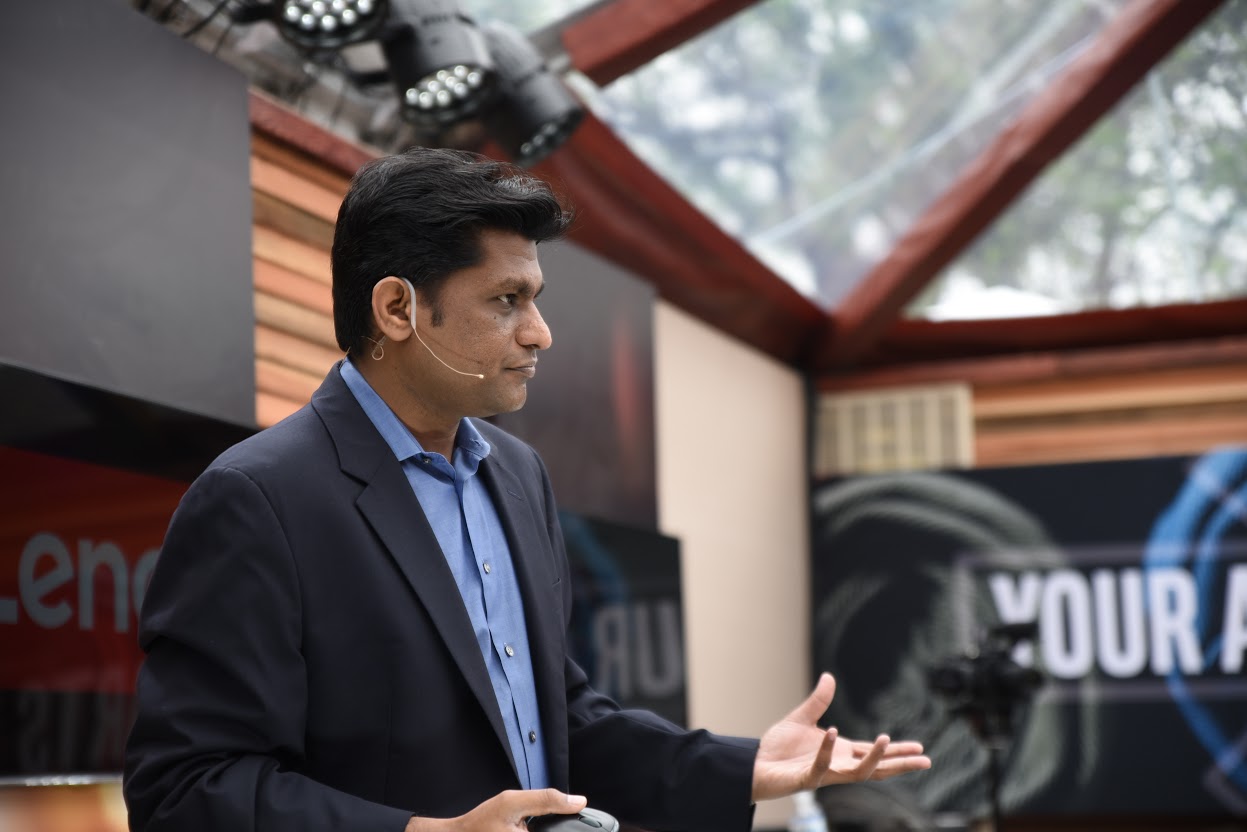 EMERGING TECH
EMERGING TECH
 EMERGING TECH
EMERGING TECH
 EMERGING TECH
EMERGING TECH
In a presentation at South by Southwest in Austin, Texas, Bhushan Desam, senior business development manager of HPC and AI, Data Center Group, at Lenovo Group Ltd., asked: What is intelligence?
Addressing Artificial Intelligence and human job loss, he gave two scenarios: A man crossing the street is about to be hit by a van — he notices and runs to safety; a computer would have no clue to the danger or how to respond. On the other hand, one could ask the man a very difficult math problem, and he would be stumped; the computer would calculate the problem and show the answer on the screen in two seconds.
“So who is intelligent here, humans or computers?” Desam asked.
Clearly, the human has the upper-hand in certain context-dependent situations that require a network of past experience and foresight. However, even here computers are catching up and sometimes surpassing humans.
SXSW is being covered by theCUBE, SiliconANGLE Media’s mobile live streaming studio. (*Disclosure below.)
Desam spoke about the ImageNet project for collecting images and analyzing them with AI. In 2015, there was a breakthrough: “This is when Microsoft researchers could actually bring the error rate even slightly below the human level,” he said. AI could identify the contents of photos with a 95.1 percent accuracy rate, whereas the human rate was 95 percent even.
The press went wild, predicting that AI would put humans out of jobs or even take over the world.
Desam begs to differ. First of all, image recognition is only one task. Secondly, closer analysis of AI suggests it works best in combination with human intelligence, not as a substitute.
For example, research on tumors from MIT and Harvard showed AI and human intelligence almost neck and neck at detection (92.5 and 96.6 in AI’s favor) and pin-pointing (70.5 and 73.3 percent in human’s favor).
“When the pathologist was assisted by AI, the whole accuracy improved to 99.5 percent. That’s a damn good accuracy,” Desam said.
Desam recalled the advent of the steam engine in 1775 — an epic advancement that also displaced people from jobs. But many of those people went on to different kinds of thought labor enabled by the new technology. This is how we ought to look at AI — a tool for raising the standards for human labor, he said.
For now, there are good descriptive analytics of data, but predictive and prescriptive analytics for affecting outcomes are still lacking, Desam stated.
“Can AI get us there? That’s the fundamental question,” he said.
Desam said that increased compute power, exploding data, machine learning, and the training and retraining of neural networks are moving us closer to that goal. Lenovo is increasing its research efforts in AI with its innovation center and a development platform. Also, Intel is taking AI all the way to the silicon with their Xeon Phi, which is ideal for machine learning, Desam said.
Watch the complete video interview below, and be sure to check out more of SiliconANGLE’s and theCUBE’s coverage of the South by Southwest (SXSW). (*Disclosure: Intel sponsors some SXSW segments on SiliconANGLE Media’s theCUBE. Neither Intel nor other sponsors have editorial control over content on theCUBE or SiliconANGLE.)
Support our mission to keep content open and free by engaging with theCUBE community. Join theCUBE’s Alumni Trust Network, where technology leaders connect, share intelligence and create opportunities.
Founded by tech visionaries John Furrier and Dave Vellante, SiliconANGLE Media has built a dynamic ecosystem of industry-leading digital media brands that reach 15+ million elite tech professionals. Our new proprietary theCUBE AI Video Cloud is breaking ground in audience interaction, leveraging theCUBEai.com neural network to help technology companies make data-driven decisions and stay at the forefront of industry conversations.